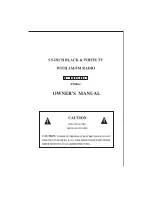
S
ETTING
W
ELDING
C
ONDITIONS
W
ELDING
C
ONDITION
C
HAPTER
6
6-24
6.6.8
Adjustment of wave frequency
This section explains how to adjust the wave frequency. In wave pulse welding, cyclically accumulating
two separate unit pulse conditions at low frequency enables to obtain continuous weld bead looking like
rows of fish scales.
Aluminum welding makes a ripple bead using an overlap method.
It can also make welding easier, even if there is a gap between weld parts, because it performs a crystal
miniaturization by vibrating the molten pool, and the welded part becomes more resistant to cracking.
The wave pulse welding changes the wire feeding speed and unit pulse condition.
When it close to the limiting value of response characteristics of wire feed motor, it makes the feeding
amplitude small automatically.
When the wave frequency is 3 Hz or more, the amplitude of feeding speed becomes small. At 5 Hz or
more, it disappears. In this case, the wire feeding speed becomes stable and only the unit pulse condition
changes.
<Image of welding bead form in the wave frequency>
T I P S
• This function is available when "DC WAVE PULSE" is selected by the WELDING METHOD key.
• Wave pattern of the welding bead varies depending on the type of welding material, travel
speed, and the heat input during welding.
The welding materials such as a mild steel and SUS do not make wave patterns, because
they spend much time to coagulate.
• The blowhole reduction effect is related to the molten material vibration.
When the molten pool is large, the vibration becomes large and has a good effect, but if it is
small, the vibration becomes small and has no effect.
The amount of molten material is related to the bead size. When weld is performed using a
thick bead, the effect becomes large.
• This effect is not for disappearing blowholes in all welding materials such as very thick
metalizing plating, a steel product containing lots of oils, and cast metal.
• When using annealed wire, bead surface may blacken somewhat if shorting occurs
frequently during the welding operation.
Wave frequency
Image of welding bead form
Low
High
















































